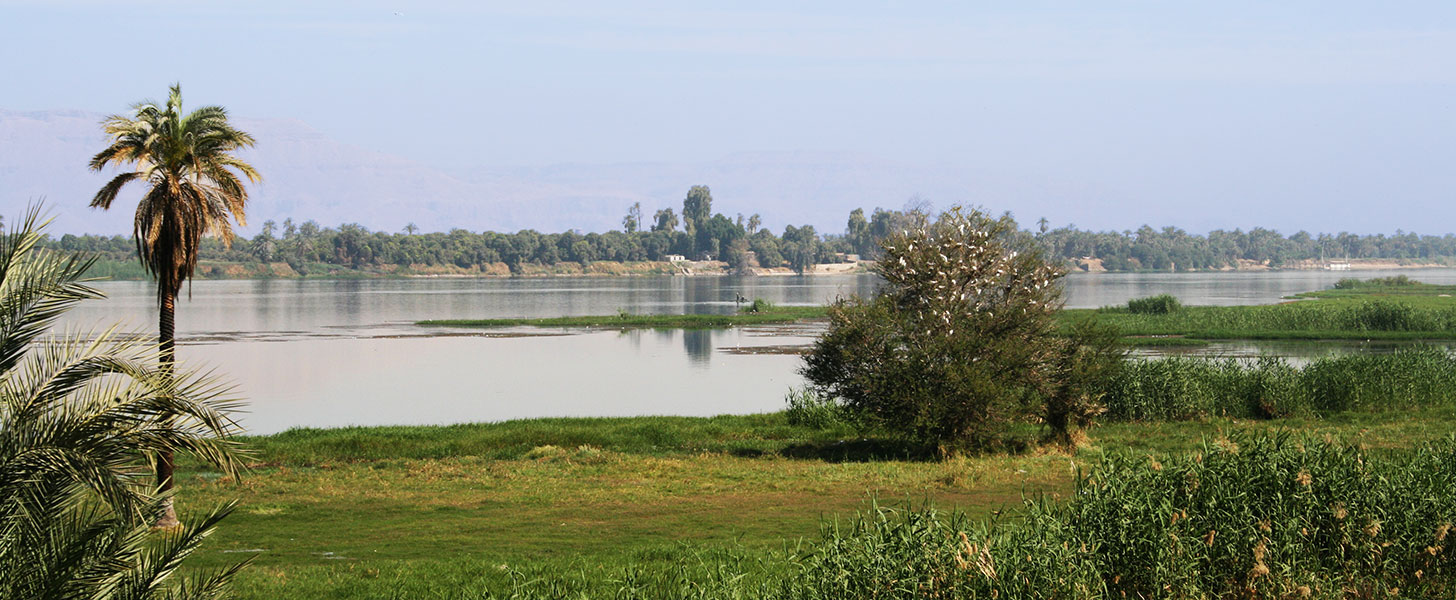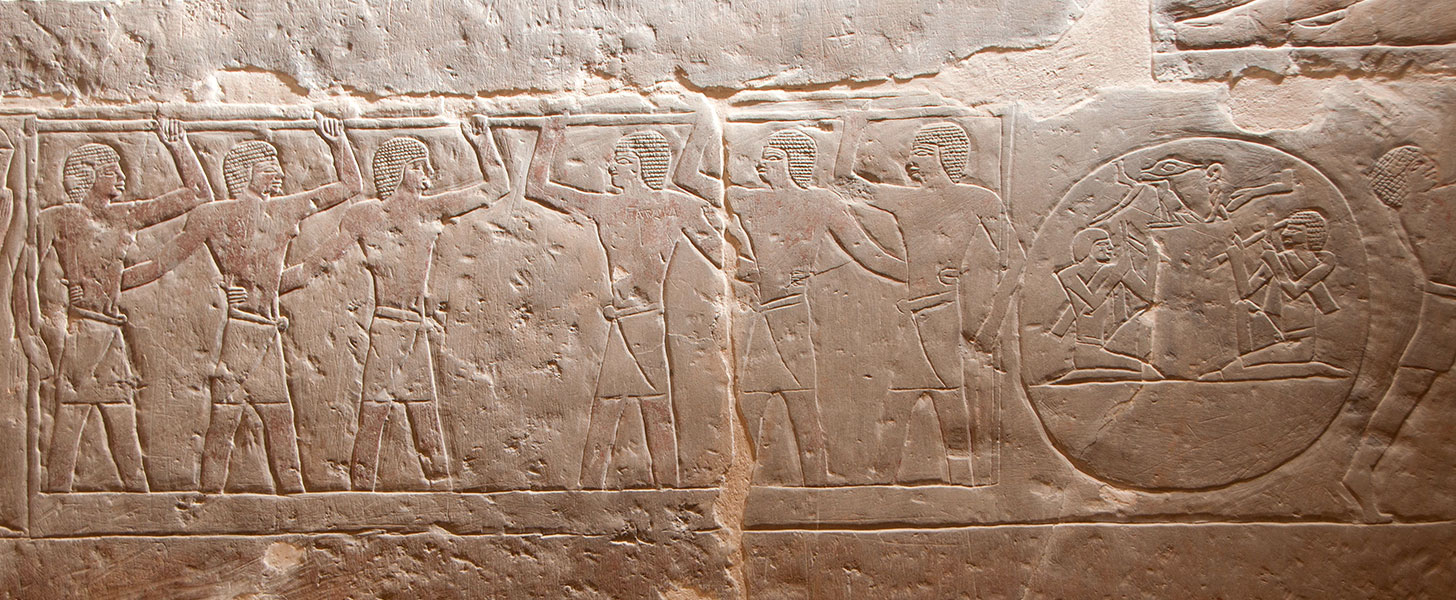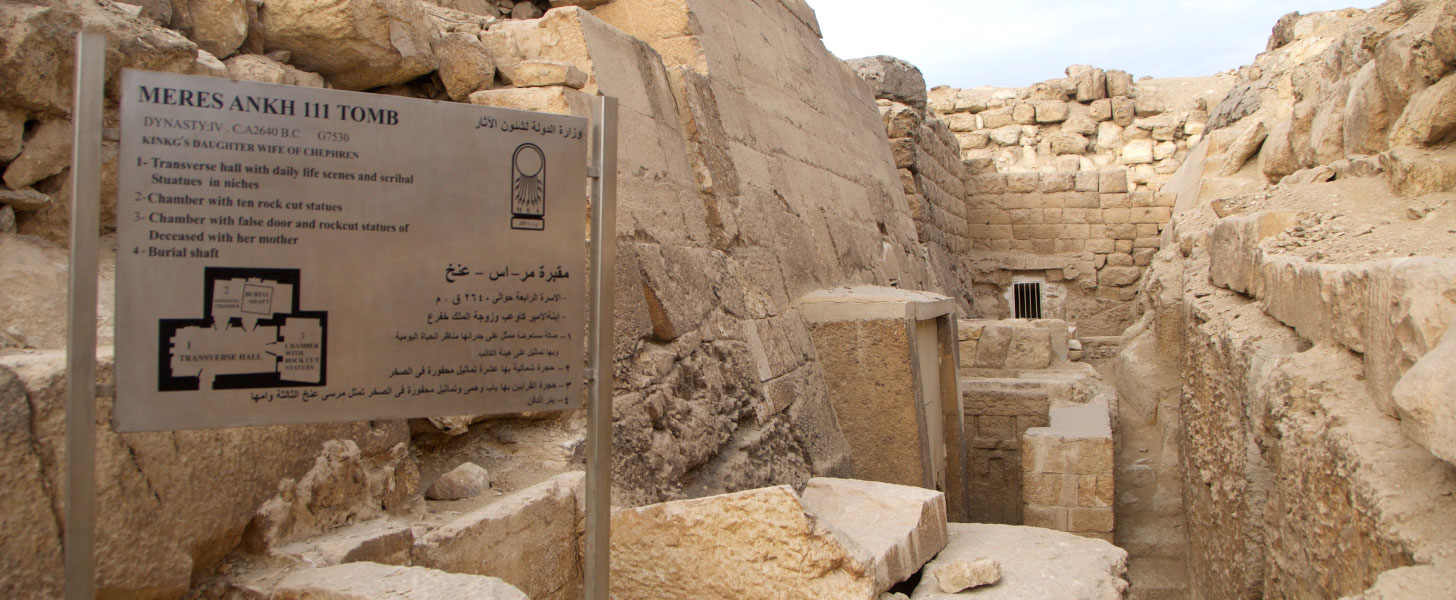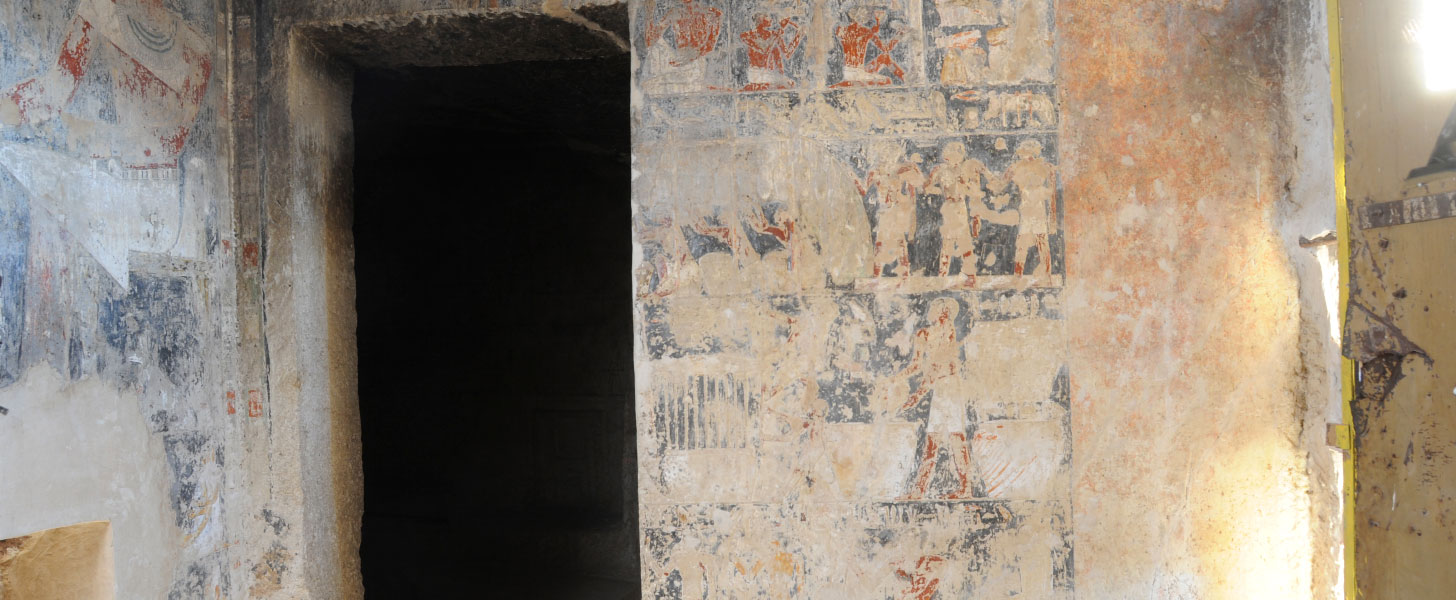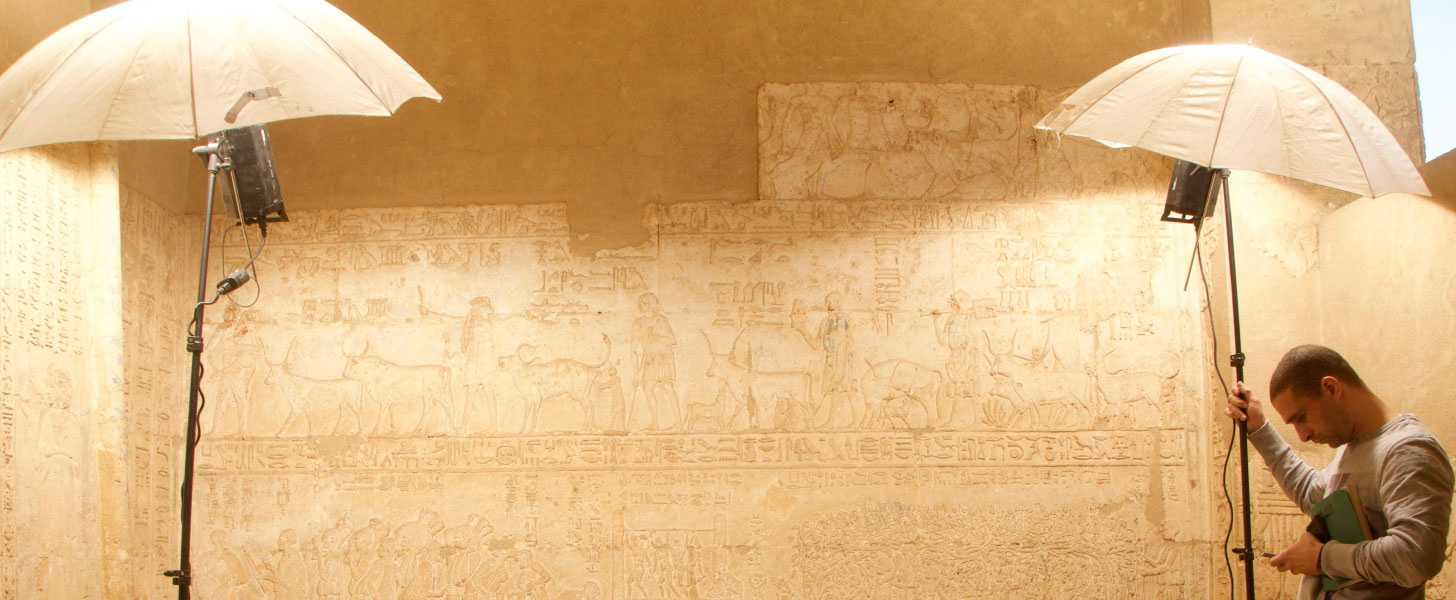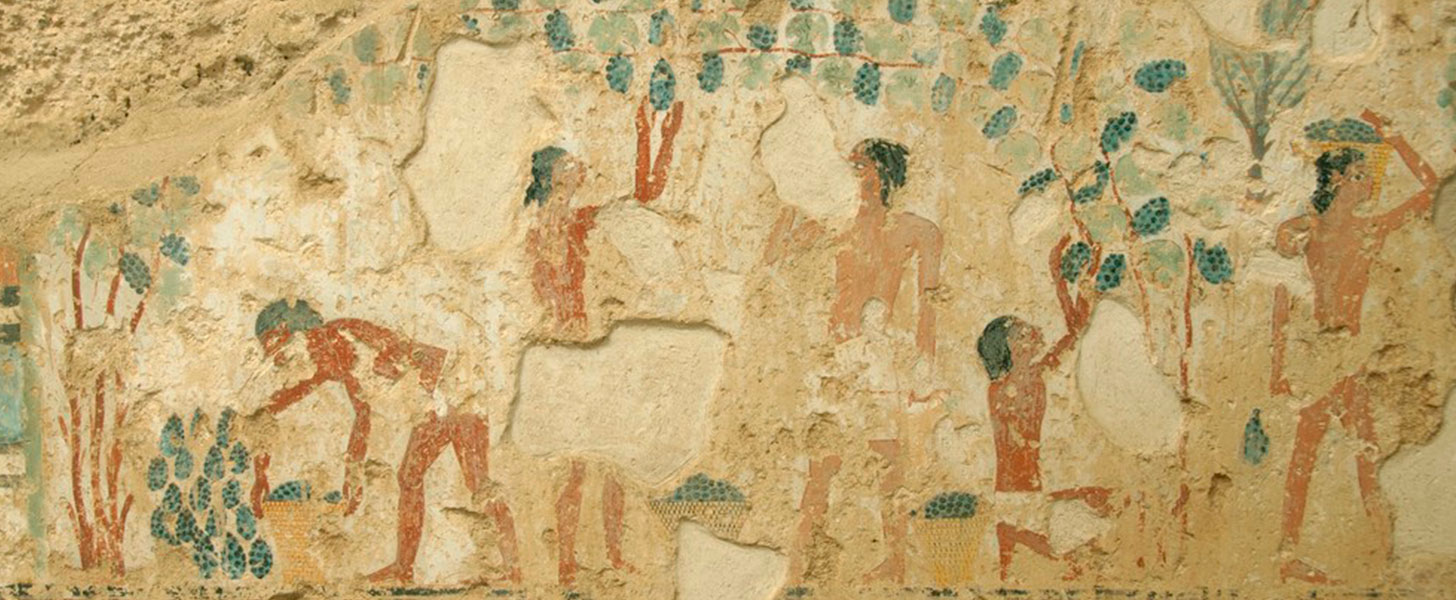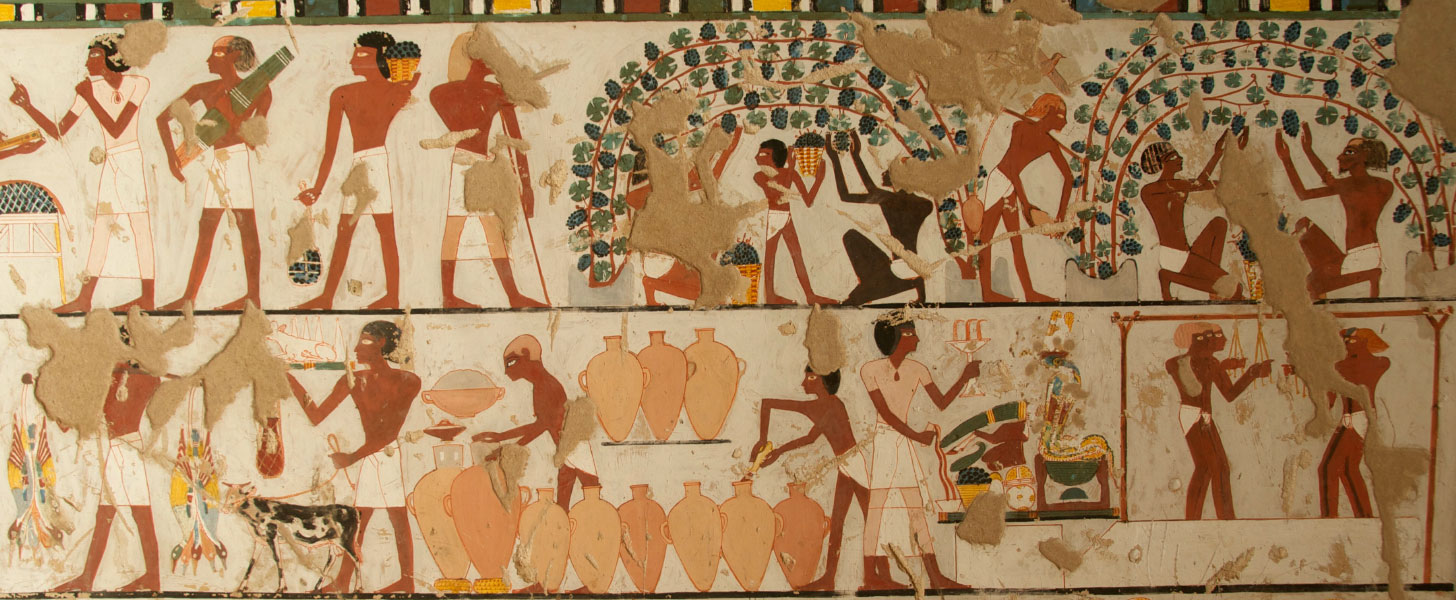Super User
Review article
“White wine after death?”, Science 312, 16 June 2006: 1579.
[DOI:10.1126/science.312.5780.1579c] View online
Books
• Guasch-Jané, M.R. Wine in Ancient Egypt: a Cultural and Analytical Study, British Archaeological Reports International Series 1851 (2008). 72 pp. Oxford: Archaeopress: Oxford (ISBN 9781407303383). Doctoral thesis dissertation. In English. View online
On-line PhD (Doctoral thesis dissertation):
• Guasch i Jané, M.R. El vi a l’Antic Egipte (2005). (ISBN 84-690-0284-8). TDX-CAT Doctoral thesis dissertation in the Catalan Universities on-line. In Catalan. View online
International conferences proceedings
• Guasch-Jané, M.R. “On the orientation of the magical bricks in Tutankhamun’s burial chamber”, in Proceedings of the Fourth International Congress for Young Egyptologists: Cult and Belief in Ancient Egypt, Sofia (Bulgaria), September 22-25, 2012. Accepted.
• Guasch-Jané, M.R., Fonseca, S., Ibrahim, M. “The ‘Irep en Kemet’ Project: documenting the corpus of wine in Ancient Egypt”, in Proceedings of the Fourth International Conference (Euromed 2012) on Cultural Heritage and Digital Libraries, Amathus (Cyprus), October 29th- November 3rd 2012, International Journal of Heritage in the Digital Area 1, 1 (2012): 181-186. Cyprus University of Technology, Unesco and EU: Essex (UK) and Cyprus. View online
• Guasch-Jané, M.R. “Tres vinos en la transfiguración de Tutankhamon para su renacimiento”, in Proceedings of the Fourth Iberian Congress for Egyptologists, Lisbon (Portugal), September 13-17 2010, Novos Trabalhos de Egiptologia Ibérica 1 (2012): 523-533.
• Guasch, M.R. “On Egyptian wine marketing”, in Proceedings of the Third International Congress for Young Egyptologists: Commerce and Economy in Ancient Egypt, Budapest (Hungary), September 25-27, 2009. Edited by: A. Hudecz and M. Petrik. British Archaeological Reports (BAR) International Series 2131 (2010): 57-63. Oxford: Archaeopress (ISBN 9781407306728). View online
• Guasch, M.R., Ibern, M., Andrés, C., Lamuela, R.M. “Scientific research on archaeological residues from ancient Egyptian wines”, in Proceedings of the Ninth International Congress of Egyptologists, Grenoble (France), September 6-12, 2004. Orientalia Lovaniensia Analecta (OLA) 150, 1 (2007): 853-857. Leuven: Peeters.
• Guasch, M.R., Ibern, M., Andrés, C., Lamuela, R.M. “Scientific research on archaeological wines from ancient Egypt” Abs. Papers American Chemical Society 225 (2003): U73.
International peer-review articles
• Guasch-Jané, M.R. “The Osirian orientation of Tutankhamun’s magical bricks”, Journal of Archaeological Research Centre in Egypt (JARCE) 48 (2012): 111-118.
• Guasch-Jané, M.R. 2011. “The meaning of wine in Egyptian tombs: the three amphorae from Tutankhamun’s Burial chamber”, Antiquity 85, 329 (2011): 851-858. View online
• Guasch-Jané, M.R., Andrés-Lacueva, C., Jáuregui, O., Lamuela-Raventós, R.M. “First evidence of white wine in ancient Egypt from Tutankhamun’s tomb”, Journal of Archaeological Science (JAS) 33 (2006): 1075-1080. View online
• Guasch-Jané, M.R., Andrés-Lacueva, C., Jáuregui, O., Lamuela-Raventós, R.M. 2006a. “The origin of the ancient Egyptian drink shedeh revealed using LC/MS/MS”, Journal of Archaeological Science (JAS) 33 (2006): 98-101. View online
• Guasch-Jané, M.R., Ibern-Gómez, M., Andrés-Lacueva, C., Jáuregui, O., Lamuela-Raventós, R.M. “Liquid chromatography with mass spectrometry in tandem mode applied for the identification of wine markers in residues from ancient Egyptian vessels”. Analytical Chemistry 76 (2004): 1672-1677. View online
Maria Rosa GUASCH JANÉ
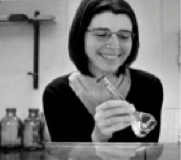 Maria Rosa Guasch Jané, studied Pharmacy (1991-1996) at the Universitat de Barcelona (UB). She holds both Masters’ degree in Nutrition and Food Science (1998) by the Universitat de Barcelona and Masters’ degree in Oriental Studies-Egyptology (2000) by the Universitat Autònoma de Barcelona (UAB), and she obtained the research sufficiency in the Doctoral Program of “Oriental Studies: Egyptology” (2000), UAB.
Maria Rosa Guasch Jané, studied Pharmacy (1991-1996) at the Universitat de Barcelona (UB). She holds both Masters’ degree in Nutrition and Food Science (1998) by the Universitat de Barcelona and Masters’ degree in Oriental Studies-Egyptology (2000) by the Universitat Autònoma de Barcelona (UAB), and she obtained the research sufficiency in the Doctoral Program of “Oriental Studies: Egyptology” (2000), UAB.
She obtained her PhD degree in Pharmaceutical Science in 2005 at the Universitat de Barcelona for the doctoral thesis entitled “Wine in ancient Egypt: a cultural and analytical study”, with mention excellent cum laude by all members. She had a research contract (2001-2005) of the Fundació Bosch i Gimpera, Universitat de Barcelona. She did postdoctoral studies (2007-2011) at the Faculdade de Ciências Sociais e Humanas, Universidade Nova de Lisboa (FCSH-UNL) in Portugal to research into the symbolism of wines related to King’s rebirth on the iconography of the ancient Egyptian tombs.
Bibliography
-
Athenaeus. The Deipnosophists, vol. I, 33 (d-f). (1927-41, C.B.Gulick Transl). Loeb Classical Lib. London.
-
Davies N. de G. The Rock Tombs of el-Amarna, 6 volumes (1900-08). Archaeological Survey of Egypt. London.
-
Erman A., Grapow H. “Shedeh” in Wörterbuch der Ägyptischen Sprache, volume IV (1930): 568. Akademie Verlag, Hinrichs: Leipzig.
-
Erman A., Grapow H. “Irp” in Wörterbuch der Ägyptischen Sprache, volume I (1926): 115. Akademie Verlag, Hinrichs: Leipzig.
-
Fonseca, S., Ibrahim, M. Documentation of viticulture and winemaking in the Egyptian tombs, Actas Jornadas Jovens em Investigação Arqueologica (JIA) Faro 2011, 1 (2012): 17-22. Faro, Universidade do Algarve
-
Guasch-Jané, M.R., Fonseca, S, Ibrahim, M. ‘Irep en Kemet’ project: creating the corpus of wine in ancient Egypt, Proceedings Fourth International Euro-Mediterranean (Euromed 2012) Conference on Cultural Heritage & Digital Libraries, Amathus (Cyprus), 29 Oct-3 Nov 2012, volume 1 (2012): 181-86.
-
Guasch-Jané, M.R. The meaning of wine in Egyptian tombs: the three amphorae from Tutankhamun’s Burial chamber, Antiquity 85, 329 (2011): 851-58.
-
Guasch, M.R. On Egyptian wine marketing, in Proceedings Third International Congress Young Egyptologists: Commerce & Economy in Ancient Egypt, Budapest (Hungary), Sept 25-27, 2009, BAR S2131 (2010): 63-9.
-
Guasch-Jané, M.R. Wine in Ancient Egypt: a Cultural & Analytical Study, British Archaeological Reports (BAR) S1851 (2008). Archaeopress: Oxford.
-
Guasch-Jané, M.R. Andrés-Lacueva, C., Jáuregui, O. Lamuela-Raventós, R.M. First evidence of white wine in ancient Egypt from Tutankhamun’s tomb, Journal of Archaeological Science (JAS) 33 (2006a): 1075-80.
-
Guasch-Jané, M.R., Andrés-Lacueva, C., Jáuregui, O. Lamuela-Raventós, R.M. The origin of the ancient Egyptian drink shedeh revealed using LC/MS/MS, JAS 33 (2006b): 98-101.
-
Guasch-Jané, M.R., Ibern-Gómez, M., Andrés-Lacueva, C., Jáuregui, O. Lamuela-Raventós, R.M. Liquid chromatography mass spectrometry in tandem mode applied for identification of wine markers in residues from ancient Egyptian vessels, Analytical Chemistry 76 (2004): 1672-77.
-
James, T.G.H. 1996. The earliest history of wine and its importance in ancient Egypt, The Origins & Ancient History of Wine: 197-213. Amsterdam.
-
Lerstrup, A. 1992. The making of wine in Egypt. Göttinger Miszellen 129: 61-82.
-
McGovern, P.E. Ancient Wine, the Search for the Origins of Viniculture (2003), Princeton.
-
McGovern, P.E. et al The beginnings of winemaking & viniculture in Ancient Near East & Egypt, Expedition 39, 1 (1997): 3-21.
-
Murray, M.A. Viticulture & wine production, in Ancient Egyptian Materials and Technology (2000): 577-99.
-
Tallet, P. Le vin en Egypte ancienne à l’époque pharaonique, Unpublished Thesis (1998).Tallet, P. Le vin en Egypte ancienne à l’époque pharaonique, Unpublished Thesis (1998).
-
Tallet, P. Les étiquettes de jarres à vin du Nouvel Empire, in C.J. Eyre (éd.), Proceedings ofSeventh International Congress of Egyptologists (1998): 1125-33. Peeters: Louvain.
-
Tallet, P. Le shedeh: étude de d’un procédé de vinification en Égypte ancienne, BulletinInstitut Français Archéologie Oriental (BIFAO) 95 (1995): 459-92.
-
Virgil, “Georgicon II, 91” in P. Virgilii Maronis. Bucolica, Georgica et Aeneis (1586). Venice:Nicolai Erythraci Imp. Heirs of Melchiore Sessa.
The scene-detail database:
The database of the scenes of viticulture and winemaking in the ancient Egyptian private tombs include the following items about each scene: record number, scene description with the different steps according to the theme, that is, viticulture or winemaking. The steps represented in the viticulture scenes include: vinery, taking care of the vine, grape harvest and counting the baskets. In the winemaking scenes, the steps represented are: transporting grapes to a press, pressing grapes, heating and filtering, pressing the remains in a sack press, filling wine jars, fermentation, offerings to goddess Renenutet, wine tasting, sealing the wine jars, labelling wine jars, counting wine jars, transporting wine jars to a cellar, refrigeration during fermentation, and storing wine jars in a cellar.
The scene-detail database also include: scene details, annotations, scene type and condition, text (inscription and translation) and image/photo. Moreover, the dating (period, dynasties and kings), provenance (governorate, archaeological site, timb name and number, and location inside the tomb) and present location (if it's the same as provenance or in a museum, then location inside the museum and inventory number, or others if it's not a museum) indicated. Finally, the tomb information: type of tomb and tomb's owner (names and titles of the owner).
In the end, the references to the scene are shown.
Bibliographical database:
The bibliographical database include the serial number, type of article/book, authors, title, website, online link, periodical/ journal/ encyclopaedia/ dictionary, edition, editors, pages, plates/ plans, publisher, place of publication, year of publication, author abbreviation and remarks. It has now 197 entries.
THE PROJECT
The WINE OF ANCIENT EGYPT (Irep en Kemet) research project studies the wine culture of Ancient Egypt. The aims are documenting the complete corpus of wine from Ancient Egypt, and analysing the relevant data including iconography, texts, artefacts and organic material from a multidisciplinary point of view. The research project also seeks to reveal the significance of the ancient Egyptian wine culture legacy in the Mediterranean region.
The project’s website promotes the study of wine in Ancient Egypt and the dissemination of archaeological knowledge regarding wine in Antiquity.
EGYWINE PROJECT 2016-2018
The ‘Ancient Egypt’s Wine Rebirth’ (2016-2018) EGYWINE Project, led by Dr. Maria Rosa Guasch-Jané, is a Marie Sklodowska-Curie Action post-doctoral grant at Mondes Pharaoniques laboratory of the Sorbonne University in Paris (France) and financially supported by the European Commission (H2020-MSCA-IF-2015).
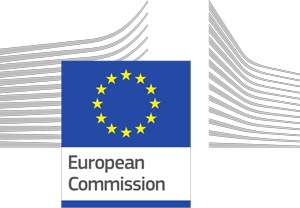

EGYWINE Project addresses the viticulture origins, winemaking and preservation of the ancient Egyptian wines, and the diffusion of the Egyptian wine culture legacy to Europe. EGYWINE Project originality is to study, through pioneering techniques, how the Egyptian wines were made to understand the ancient traditional elaboration methods to progress on knowledge and heritage conservation.
Project Team
Dr. Maria Rosa Guasch-Jané is post-doctoral researcher Marie Sklodowska Curie of the EGYWINE project (H2020-MSCA-IF-2015) at the Mondes Pharaoniques laboratory (UMR 8167 ‘Orient et Méditerranée’) Sorbonne University in Paris.
EGYWINE Project members have highly specialized labs and are leaders of the below areas of study:
* Ancient Egypt: Professor Pierre Tallet, director of Mondes Pharaoniques lab (UMR8167 ‘Orient et Méditerranée’) at Sorbonne University in Paris.
* Paleogenomics: Professors Thierry Grange and Eva-Maria Geigl, directors of the ‘Epigenome and paleogenome’ laboratory of the Institut Jacques Monod (UMR7592), University Paris-Diderot/CNRS.
* Grapes and wine: Professor Jean-Michel Boursiquot, MontpellierSupAgro-INRA (UMR1334 ‘Amélioration Génétique et Adaptation des Plantes’).
* Ancient Egyptian ceramics: Dr. Sylvie Marchand, director of the ceramics lab of the Institut Français d’Archéologie Orientale (IFAO) in Cairo.
WEBSITE WINE OF ANCIENT EGYPT SINCE 2013
Design, creation and development of the website by Josep Socorregut Domènech of Sistemes de Gestió de Patrimoni (SGP). Website creation financially supported by Vinseum, the Museum of the wine cultures in Catalonia, and Perelada Fine Estates.
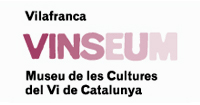
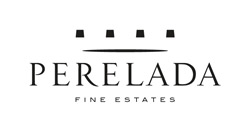
VITICULTURE AND WINEMAKING SCENES PROJECT 2011-2014
The ‘Study of viticulture and winemaking in Egyptian tombs’ (2011-2014) was a three-year research project directed by Dr. Maria Rosa Guasch Jané at the Faculty of Social and Human Sciences of the University Nova in Lisbon (Portugal) and funded by the Fundação para a Ciência e a Tecnologia (FCT) of the Portuguese Ministry of Education and Science.
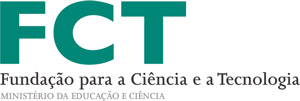
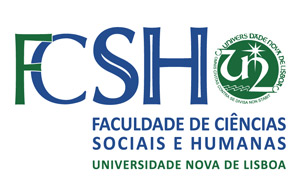
The project aim was to document and investigate the viticulture and winemaking scenes in the Ancient Egyptian private tombs, a comprehensive study of all the images, including the texts associated to them. This research project has successfully produced a researchable, inclusive bibliographic database of wine, viticulture and winemaking in ancient Egypt, as well as a researchable scene-detail database of viticulture and winemaking scenes in the Egyptian private tombs throughout the ancient Egyptian history, in a total of 92 records. Furthermore, after a research in-depth in the Egyptological archives unpublished scenes have been unveiled.
A complete photographic survey was also achieved permitting the record and study of all the scenes and the possibility of knowing the condition of all the tombs in an exact time frame. The project’s second phase involves the creation of an online georeferenced map of Egypt, illustrating the ancient Egyptian tombs that include viticulture and winemaking scenes. This photographic, documentary and analytical study is an important tool for the future documentation and conservation of the archaeological heritage of Egypt.
Project Team
Maria Rosa Guasch-Jané (project director): BS in Pharmacy (1996) and Masters’ degree in Nutrition and Food Science (1998) by the University of Barcelona; Masters’ degree in Oriental Studies-Egyptology (2000) by the Autonomous University of Barcelona; PhD in Pharmaceutical Sciences (UB, 2005) for the doctoral thesis entitled “Wine in ancient Egypt: a cultural and analytical study”.
Sofia Fonseca: BA in Archaeology (1997) at University de Coimbra (Portugal) and Masters’ Degree in Egyptology (2001) by the Autonomous University of Barcelona.
Mahmoud Ibrahim: BA in Egyptology (1998) at Cairo University (Egypt) and Master’s degree in Egyptology and Linguistics (2006) at Basel University (Switzerland).


